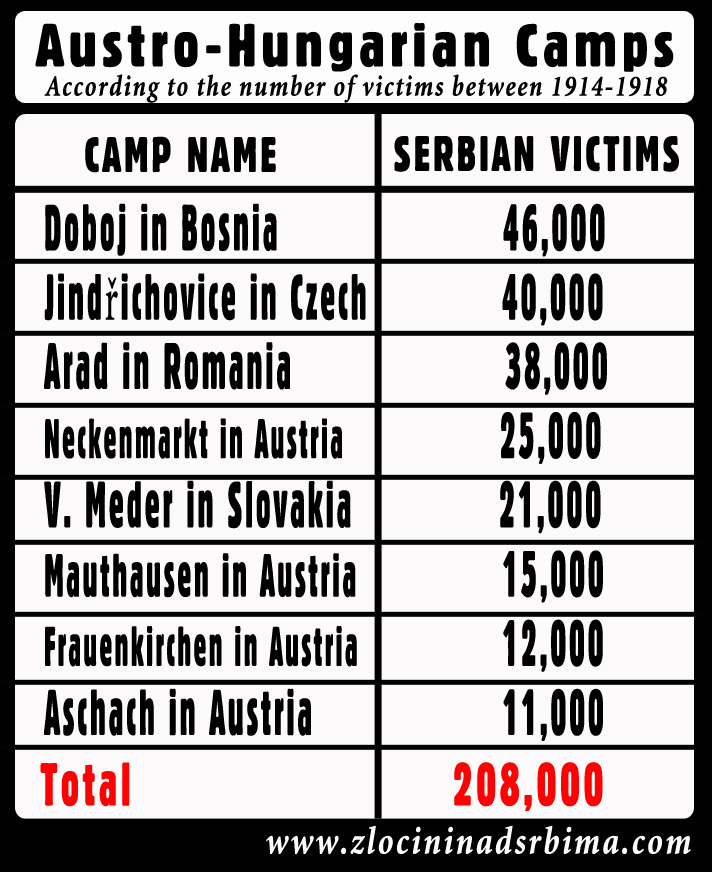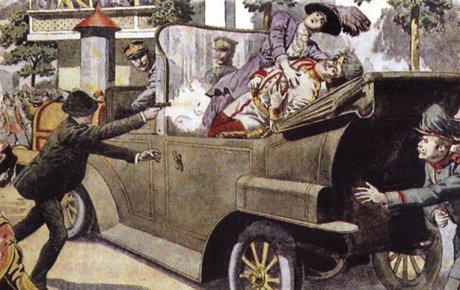|
|
Period:
First World War
Region:
Bosnia
The Austro-Hungarian camp in Doboj 1915
 The Doboj camp was established on 27th December 1915, during First World War. At least 45,791 Serbs were held there. Of total number, 16,673 were men, 16,996 women, 12,122 Serbian soldiers, and among them, there were also elderly, women, and children from the Kingdom of Serbia and Montenegro. The Doboj camp was established on 27th December 1915, during First World War. At least 45,791 Serbs were held there. Of total number, 16,673 were men, 16,996 women, 12,122 Serbian soldiers, and among them, there were also elderly, women, and children from the Kingdom of Serbia and Montenegro.
After declaring the war to Serbia, the Royal Palace in Vienna started establishing concentration camps all over its empire. It established at least around 50 camps, and the most notorious ones apart from the camp in Doboj were Boldogassozony, Arad, Neusiedl am see, Doboj, Veľký Meder, Aschach, Olomouc, Mauthausen, etc.
It is estimated that over 200,000 Serbs were imprisoned in these establishments, and more than 76,000 have never seen freedom.
In the Doboj camps, more than 12,000 Serbs was killed, and only in April of 1916, 643 children were killed. The camp was closed on the 5th July 1917.
A monument was raised for the victims next to the Church of the Holy Apostles Peter and Paul, which is an obelisk of a granite stand and a cross on the top.
After Second World War, Yugoslav communist authorities did not care about the victims of First World War, because they were Serbian victims and stories of genocides upon the Serbs were forbidden. Many death zones of 1914-1918 were forgotten and demolished.
The memorial day for the victims of the Doboj camp is on the 27th December.
|
FIRST WORLD WAR 1914-1918 |
|
Battles of: Cer, Drina, Kolubara, Leget, Cemerno, Mojkovac, Kajmakcalan, Gornicevo, Dobro Polje
Camps: Mauthausen, Arad, Jindrihovice, Broumov, Boldogasonj, Nadjimer, Nezider, Aschah, Doboj, Sliven
Crimes: Macva, Surdulica, Great Retreat, Sabac
|
BACKGROUND
At the beginning of 1904, the Kingdom of Serbia signed a trade agreement with the USA, France and Russia... and began exporting its products to the overseas countries through the port of Thessaloniki.
This led to a great economic upswing of the Kingdom of Serbia, which annoyed the Vienna Court, which viewed Serbia as a great rival since Serbia had the highest economic growth rate in Europe at the time, and at the same time a large number of Serbs lived in the occupied territories of the Habsburg Monarchy.

Map of south-eastern Europe in November 1913.
The army of the Kingdom of Serbia liberated its enslaved territories (Raska, Kosovo and Metohija and Old Serbia) from the Turks in the First Balkan War, by achieving major victories in the fall of 1912 at the command of Duke Petar Bojovic at Kumanovo, Prilep and Bitola, and as such completely expelled the Ottomans from the Balkans.
And a year later in the summer of 1913 the army of the Kingdom of Serbia protected Vardar Macedonia from the Bulgarians in the Second Balkan War. The Serbian national revolution was thus continued, at the beginning of the 19th century by Karadjordje Petrovic and Milos Obrenovic.
In the summer of 1914, the Austro-Hungarian Monarchy used the Sarajevo assassination, that is, the assassination of Austrian Crown Prince Franz Ferdinand by members of Young Bosnia (Gavrilo Princip, Bogdan Zerajic, etc.) as an excuse to invade the Kingdom of Serbia, thus starting First World War.

Gavrilo Princip and his comrades in Sarajevo
A dispatch was sent from Vienna, which no sovereign state could accept. Thus, in late July 1914, Austria-Hungary declared war on Serbia. Montenegrin King Nikola I Petrovic and Russian Emperor Nikolai II Romanov immediately sent messages saying that they would help the Serbs. Likewise, German Emperor William II made a military alliance with the Vienna Palace.
ESTABLISHMENT
The Austro-Hungarian camp in Doboj was established in the place of today’s railway station, more accurately on 12th December 1915 preparations for the construction of the camp began at the premises of what used to be the stables of the Austrian army.
The first group of inmates were 600 men, women, and children of Serbian nationality and were received on 27th December 1915 from the region of upper Podrinje, as well as Eastern Herzegovina and District of Sarajevo.
This way Austro-Hungarian authorities wanted to create a buffer zone towards the Kingdom of Serbia, because they were afraid that Serbs from Bosnia and Herzegovina would join the Serbian army.
CAMP CONDITIONS
Serbian inmates in this camp were housed in wooden sheds, in which Austrian soldiers were held when they would contract a disease called “Sakadia”, and before that, it housed mainly horses. The conditions in this camp were very inhumane because their founding fathers did not anticipate live inmates.
The camp in Doboj had 10 sheds, which had no floors, neither concrete nor wooden, nor even strew, just trash and feces which was left behind from the livestock that used to be there. In this camp were many women with little children, and everyone was compressed in a small area, under great cold, on the cold ground, where they were day and night.
Also, there were many insects attracted by the horse feces.

Disinfections of these areas were never conducted. There were many cases of even 1,000 inmates being held in one single shed. This often led to an appearance of deadly diseases such as Typhus, Cholera, Chicken pox, Dysentery, etc., which relentlessly killed Serbian inmates.
In the beginning, the daily death toll was 10-20 inmates, and later this number increased to 100 per day. This was also affected by mass starvation, exhaustion, torture, beatings of Austrian killers while the brutality of the Austrian guards had no limits. Women were also forced to relieve themselves in front of men and the humiliation was unprecedented. Women were also raped by the Austrian guards.
The food in the camp was miserable, mostly it was a liquid soup from grass and horseradish, while the seed bread came every third day. Austrian Doctor Geber was disgusted upon seeing the food which was given to the inmates: children, women, and the elderly. They had to walk as far as 2km on foot to get food. It was noted that one mother had lost 5 kids, her husband, and her parents. She wanted to jump into the cold river of Bosnia, but she was saved by Slavko Trnić.
Many Serbian martyrs in this camp could not be saved, so they jumped into the river Bosnia and Spreča, around the local frosts and hills, but rarely buried in Orthodox Christian graves.
NAME OF VICTIMS
It is impossible to name all the victims who did not survive this horrible “Dante’s Hell” of Doboj’s concentration camp, but some names will be given.
-
Vlado Šegrt , who spent several months in the camp as a child and later became a member of the council of SFRJ
-
Milivoje Živanović from Požarevac, who in 1914, joined the Serbian army as a volunteer.
-
Andrija Delini, manager of a theatre
-
Brothers Miloš and Djordje from the village of Osovo
THE CAMP CLOSURE
The camp was closed on 5th July 1917, by the order of Austro-Hungarian authorities. That is when the last inmates were sent to some other camps, mostly in Hungary: Arad, Kecskemét, Komárno, Sopron.
MONUMENTS
In September 1938, Serbian Orthodox Church published the first book under the title “Monuments 1915-1917”, in which the names of the victims of these evil camps are written.
Also, in the memorial ossuary, built at the place of the former camp, remains of 12,000 inmates were buried.
PUBLICATIONS
There are several publications about the Doboj camp 1915-1917, that speak about the horrors happened during this period and which Serbian inmates had to hide for 1 and a half year. They include:
-
Dr. Josip Škarić – “Memories of a doctor”
-
Jovo S. Drakulić – “Dante’s Hell in Doboj”
-
Dušan Pravac – “The Doboj camp 1915-1917”
-
Isaije Mitrović – “The camp in Doboj”
-
Julka Popović-Srdić – “Poems”
 
Tags:
Please, vote for this article:
Visited: 3197 point
Number of votes: 9
|